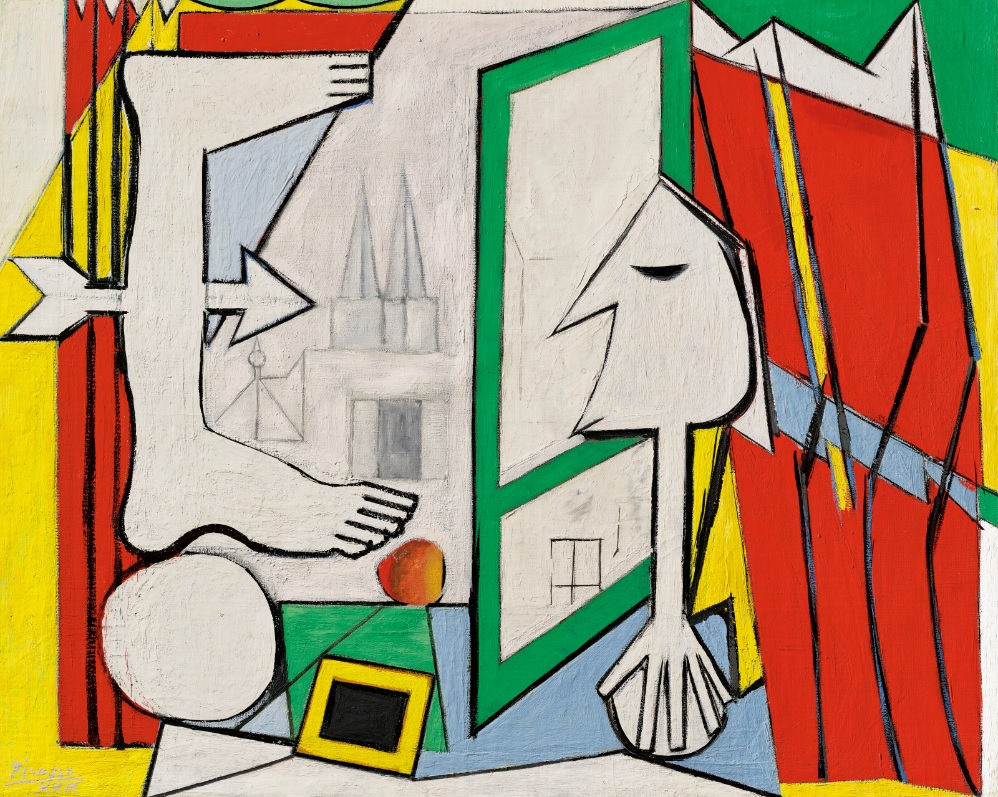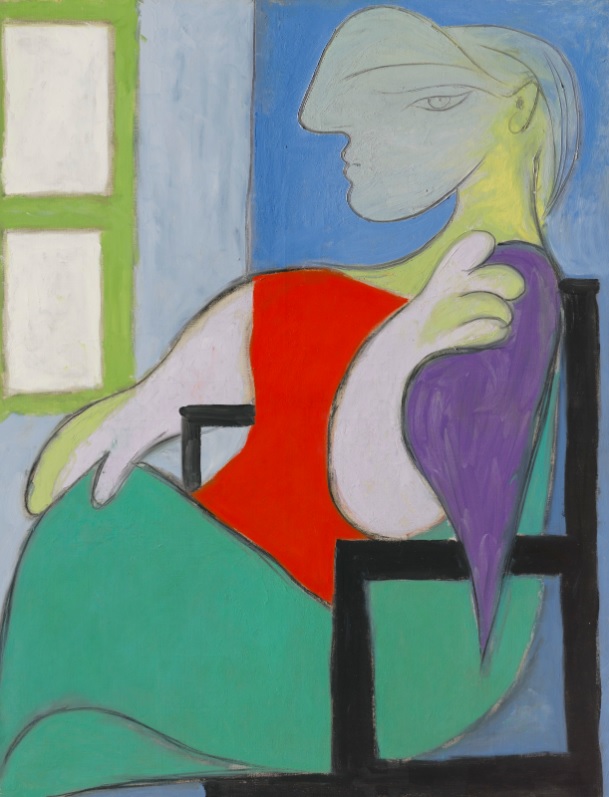The 1929 Surrealist masterpiece — painted when Picasso was still married to Olga Khokhlova — is a coded double portrait of the artist and his muse
In 1929 Pablo Picasso was two years into a passionate love affair with a young woman called Marie-Thérèse Walter. He was still married to the Russian ballerina Olga Khokhlova at the time, so their relationship was veiled in secrecy. ‘My life with him was always secret,’ Walter once said. ‘Calm and peaceful. We said nothing to anyone.’
Of course, this is not entirely true. Soon after meeting Marie-Thérèse in 1927, Picasso began to translate her image into visual form, at first clandestinely and later quite directly as a sensual, curvaceous female figure.
‘The arrival of Marie-Thérèse in Picasso’s life not only invigorated every area of his work, it was also a pivotal moment that completely changed his style and focus from then on,’ says Christie’s deputy chairman Olivier Camu. ‘Her statuesque form and radiant beauty, as well as her youthful, carefree sensibility, inspired the artist to create works that stand among the finest of his career.’
One such work is La fenêtre ouverte (1929), a powerful and brightly coloured depiction of Picasso and his lover dating from the highpoint of his Surrealist period.
It features two abstracted figures and a surreal assortment of objects — a draughtsman’s square, a piece of fruit, an empty picture frame — reminiscent of the artist’s earlier Cubist still lifes. A crimson curtain frames the green-rimmed window, which opens onto a vista of Paris.

Pablo Picasso (1881-1973) ‘La fenêtre ouverte’ 1929
‘It represents a brilliant fusion of the different passions and inspirations that defined the artist’s life at the end of the 1920s,’ says Camu. ‘We are thrilled to present it to the market for the first time.’
Relishing the secret nature of their romance, Picasso first portrayed Marie-Thérèse in his art using a variety of symbols and signs.
‘Picasso took great pleasure in playing visual games with his lover’s identity,’ says Camu. ‘This cryptically coded work stands as a fascinating example.’
In early still lifes from the period, she is presented as a simple monogram: the MT of Marie-Thérèse intertwined with the P of Picasso.

Pablo Picasso (1881-1973) ‘Femme assise près d’une fenêtre (Marie-Thérèse)’ 1932
Later, as their relationship progressed, she appears more fully, her undulant curves rendered in violet, scarlet and canary yellow. Femme assise près d’une fenêtre (Marie-Thérèse), above, painted in October 1932, is one such brilliant example.
In La fenêtre ouverte, Marie-Thérèse is depicted as an angular plaster bust on a long, limb-like neck clutching a white ball. Although her full form would not emerge in the artist’s work until the spring of 1931, her luminous profile and bobbed hair are, with hindsight, instantly identifiable here.
‘It’s me all right,’ Walter told the art historian and Picasso scholar Lydia Gasman when she was shown a reproduction of this painting.
In the background, seen through the open window, is another symbolic nod to Marie-Thérèse’s existence: the church of Sainte-Clotilde.
The church’s two spires could be seen from the Left Bank apartment that Picasso shared with his lover. It is therefore likely that this work depicts their secret bolthole — the setting for a number of paintings of Marie-Thérèse, including Le Rêve (1932), which sold at Christie’s New York in 1997 for $48,402,500.
As for Picasso, he has disguised himself as an assemblage of objects, including the arrow pointing directly to the sculptural form facing him. For Gasman, ‘the arrow is not only an allusion to Picasso’s magic weapon, but also a mythological symbol of “love and death” given to Cupid and Mars’.
It is interesting to note that, in this coded work, the objects symbolising Picasso form the letter E, as in Español, a possible allusion to the artist’s nationality.
The disembodied feet, says Gasman, are perhaps inspired by the works of two Surrealist writers, Georges Bataille and Michel Leiris, who had explored the significance of the body part in the November 1929 edition of the Surrealist journal Documents.
As Picasso’s biographer Roland Penrose explained, ‘The association with the Surrealists had the effect of bringing out in a sudden burst a new and disquieting manifestation of the underlying restlessness in Picasso’s mind, which had been for a while partially overlaid by domestic happiness.’

A photograph by Picasso of Marie-Thérèse Walter at Juan-les-Pins, July 1932. Photo: © Archives Maya Widmaier-Ruiz-Picasso. © Succession Picasso/DACS, London 2022.
In addition to Picasso’s radical experimentations with form, La fenêtre ouverte shows his mastery of compositional space. A piece of fruit hangs precariously on the edge of the window ledge, as if it could tip over into the white abyss beyond, while Marie-Thérèse’s bust is mounted upon a hand resting on a ball. Then, of course, there is the construction of feet and an arrow, perfectly balanced on another orb-like shape.
‘The hieroglyphic form and the plaster bust stand amid the picture plane in perfect equilibrium,’ notes Camu. ‘It is a composition of exquisite balance and proportion.’
Source: Christie’s







